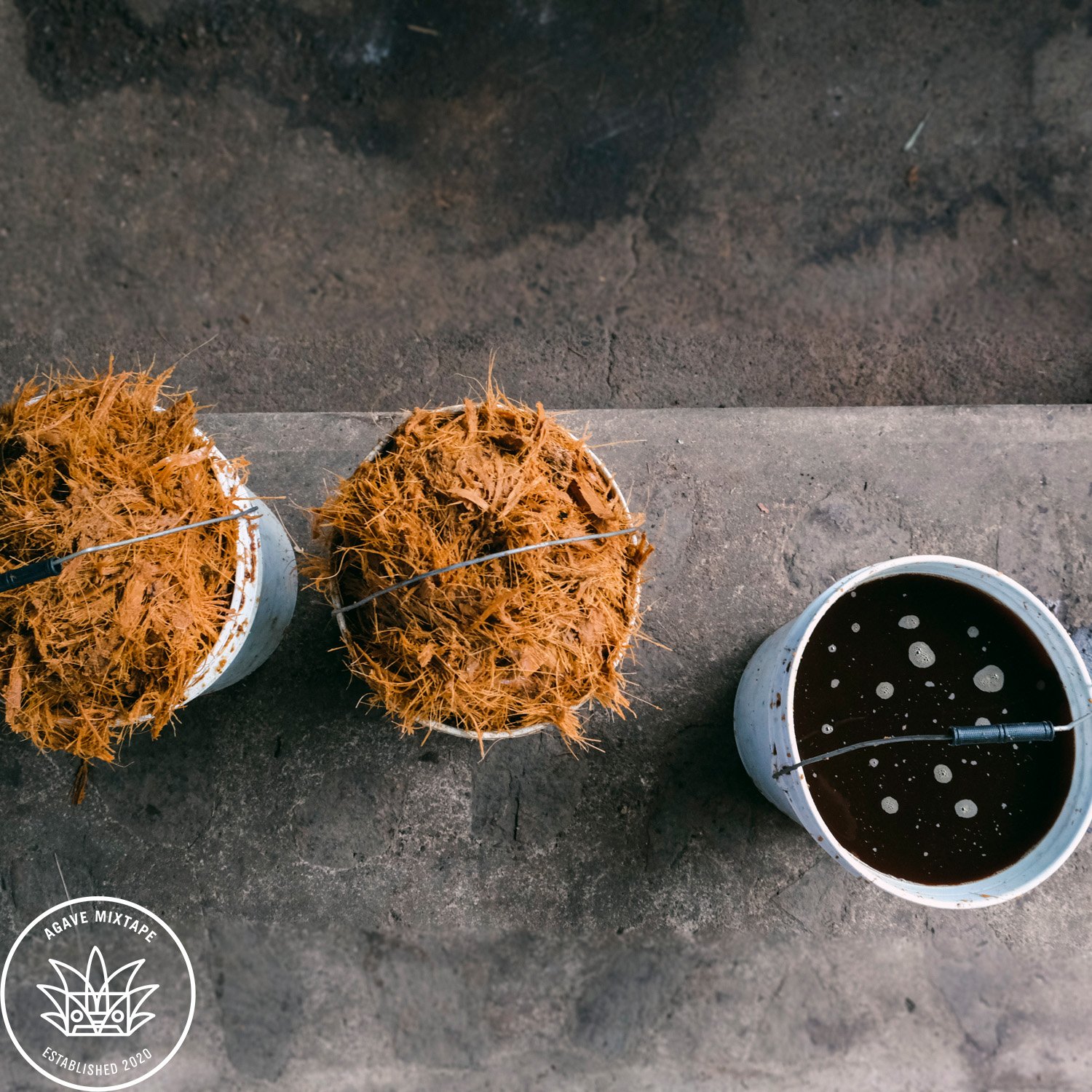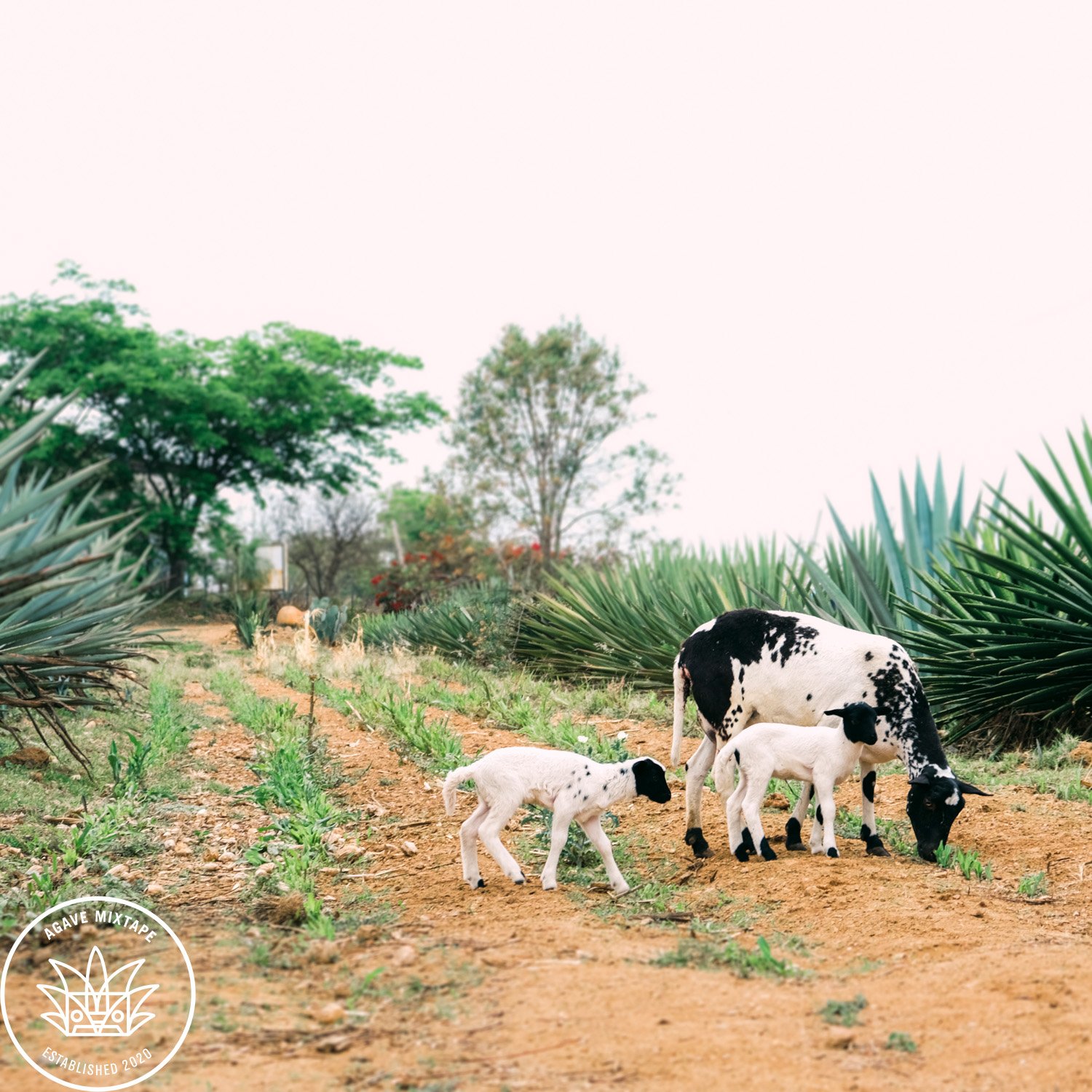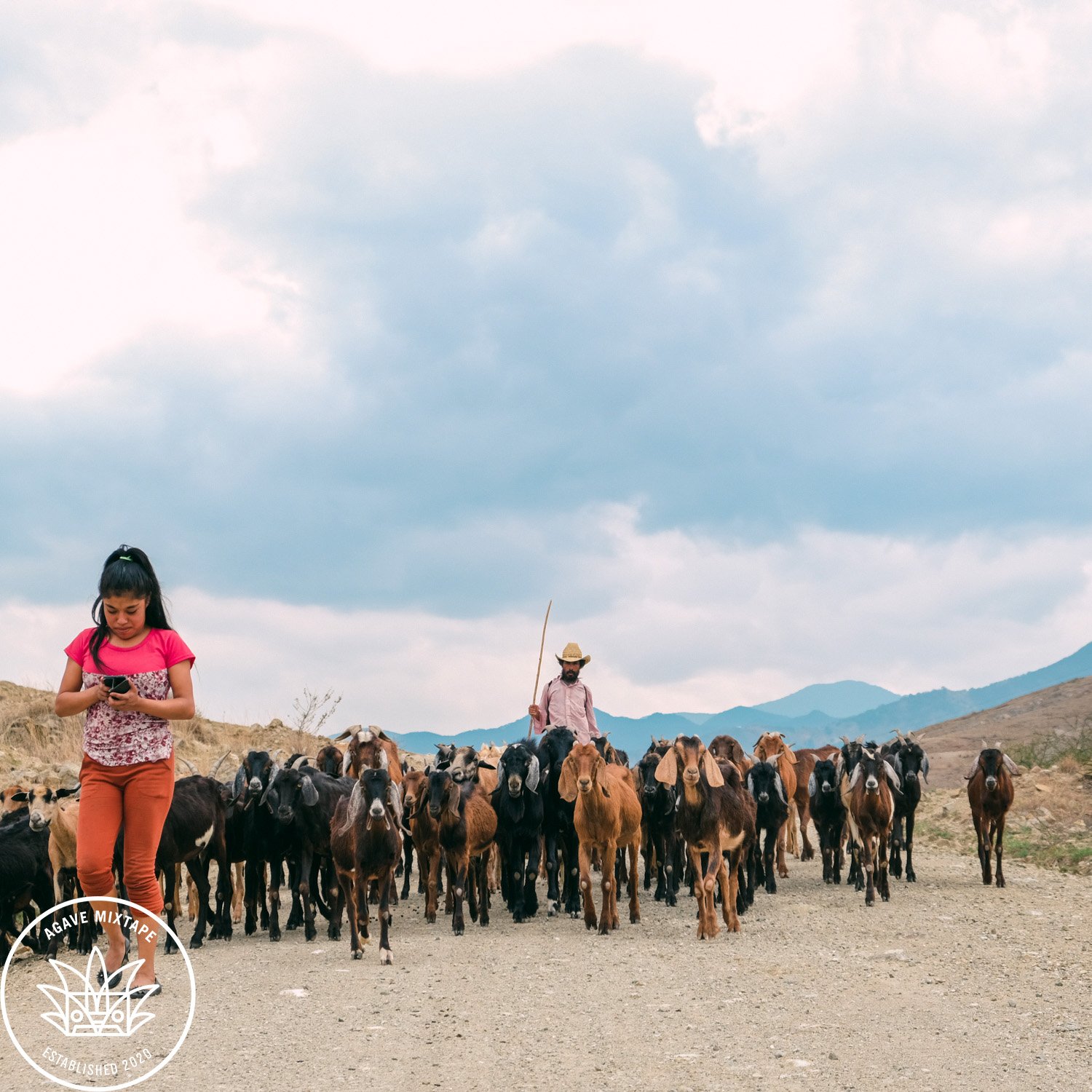Pechuga
48%, August 2022
Lalo Ángeles, Santa Catarina Minas, Oax.
If Lalocura pechuga deviates from the familiar, it’s only because what’s familiar today has deviated from tradition. At a time when so many brands are following consumers’ enthusiasm for “pechugas” with exotic or novel ingredients, Lalo continues to work with a recipe that has been produced in Santa Catarina Minas for as long as 300 years, by his estimate.
Where most pechugas use espadín (an abundant and cost conscious choice) as a base, Lalo always prefers to use a mezcla, typically a 50/50 of tobasiche and espadín. The botanicals are still the front and center in every sip, but the tobasiche brings an earthy balance to the otherwise high-tone quality of the fruits. More than just a creative choice, utilizing a mezcla for the base is how people in Minas would have done it 50 or even 250 years ago, before the 1980s when espadín became the dominant cultivar in the region. He recalls making a batch of pechuga without any tobasiche some 20 years ago, and being surprised at how many of his neighbors in Minas complained that the taste was off.
What is Pechuga?
The literal translation is “breast” as in chicken breast, but in the world of Oaxacan mezcal, it refers to a spirit distilled with a variety of fruits, nuts and spices, and (usually) meat. The process is similar to that of gin, but the results are extremely different. The finished product has a bright and sweet flavor profile, and protein from the meat adds a richness to the body. New school producers have taken to experimenting with all sorts “stunt” ingredients - cannabis, peyote, lobster, al pastor marinated pork - to varying effects.
How it’s made
An otherwise finished batch of tobasiche-espadín (2x distilled, and composed) is returned to the still, and a mix of banana, pineapple, apple, apricot almonds, raisins, anise, orange peels, sugar and rice is added to the pot. A gallina criolla (organic hen raised on Lalo’s farm) is butchered and cleaned, and suspended above the liquid by a string. A fire is lit, and the liquid is distilled for a third time, extracting the flavors of the botanicals and fat from the chicken, which is fully cooked by the hot vapors.
Talking about this specific batch, Lalo said, “it’s a very fresh mezcal. This mezcal in particular is the one we put on the ofrenda [for día de los muertos], and after muertos, we will leave on the altar [at the palenque]. Fans of Lalo’s cult classic rainy season pechuga batch, may be excited to see that this new batch was distilled in August (during Oaxaca’s rainy season), but sadly this was a very dry year, without any rain at the time the plants were harvested, and the batch is without any of the “rainy season” character.
While every batch of pechuga is special, there’s some added excitement around it this year after none was produced in 2021 because a limited amount of mature tobasiche meant that by the time the base was ready, many of the fruits were out of season.








